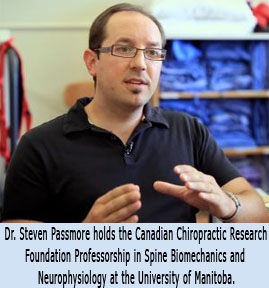Danish researchers claim that antibiotics could cure 40% of chronic back pain patients
Source The Guardian
Up to 40% of patients with chronic back pain could be cured with a course of antibiotics rather than surgery, in a medical breakthrough that one spinal surgeon says is worthy of a Nobel prize. Surgeons in the UK and elsewhere are reviewing how they treat patients with chronic back pain after scientists discovered that many of the worst cases were due to bacterial infections.
The shock finding means that scores of patients with unrelenting lower back pain will no longer face major operations but can instead be cured with courses of antibiotics costing around £114. One of the UK’s most eminent spinal surgeons said the discovery was the greatest he had witnessed in his professional life, and that its impact on medicine was worthy of a Nobel prize.
“This is vast. We are talking about probably half of all spinal surgery for back pain being replaced by taking antibiotics,” said Peter Hamlyn, a consultant neurological and spinal surgeon at University College London hospital.
Specialists who deal with back pain have long known that infections are sometimes to blame, but these cases were thought to be exceptional. That thinking has been overturned by scientists at the University of Southern Denmark who found that 20% to 40% of chronic lower back pain was caused by bacterial infections.
“This will not help people with normal back pain, those with acute, or sub-acute pain – only those with chronic lower back pain,” Dr Hanne Albert, of the Danish research team, told the Guardian. “These are people who live a life on the edge because they are so handicapped with pain. We are returning them to a form of normality they would never have expected.”
The Danish team describe their work in two papers published in the European Spine Journal. In the first report, they explain how bacterial infections inside slipped discs can cause painful inflammation and tiny fractures in the surrounding vertebrae.
In the second paper, the scientists proved they could cure chronic back pain with a 100-day course of antibiotics. In a randomised trial, the drugs reduced pain in 80% of patients who had suffered for more than six months and had signs of damaged vertebra under MRI scans.

 Research is key to developing better treatments and care protocols to eliminate disease and stay healthy. The chiropractic profession is fortunate to have twelve Canadian Chiropractic Research Foundation (CCRF) research chairs in major universities across the country, each of which conducts and contributes to world class research. But the more significant benefits to weaving these research chairs into the fabric of academia are the interdisciplinary connections and collaborations that result. There is no other time in history where we have seen so many different health professions coming together with one common goal: improving healthcare.
Research is key to developing better treatments and care protocols to eliminate disease and stay healthy. The chiropractic profession is fortunate to have twelve Canadian Chiropractic Research Foundation (CCRF) research chairs in major universities across the country, each of which conducts and contributes to world class research. But the more significant benefits to weaving these research chairs into the fabric of academia are the interdisciplinary connections and collaborations that result. There is no other time in history where we have seen so many different health professions coming together with one common goal: improving healthcare.